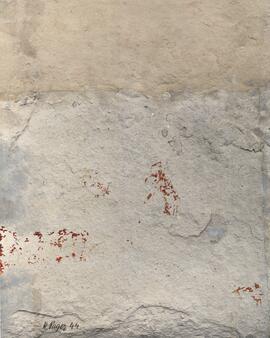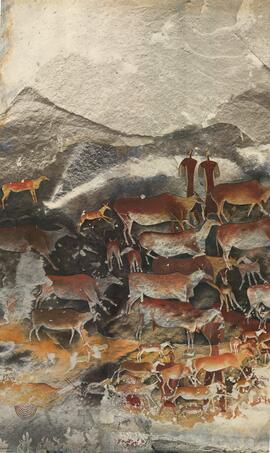HPC HPC-RARI-HPC-01-67HC.jpg
·
Item
Part of Pager, Harald
Several of the eland at the top of this panel are unfinished. It would seem that the white of the necks and legs was not completed.
The humanoid figure with the wing is an unusual example of the ales or 'flying creatures'. The main shaded polychrome eland at the bottom is an outstanding example of the Bushman art. Attenuated figures (elongated figures)
P44 pager F197 - 198. Botha’s Shelter I











